Tyan Transport SX TS65-B8253 Internal Hardware Overview
In our internal hardware overview, we are going to generally move from the front of the chassis to the rear and discuss key features. We already discussed the twelve front panel bays, but we did not discuss how they are connected. Tyan is using cabling to go from the motherboard to the backplane both for PCIe and for SATA connectivity. The backplane itself is secured via thumbscrews to make it easier to service which is a nice touch in a system like this.
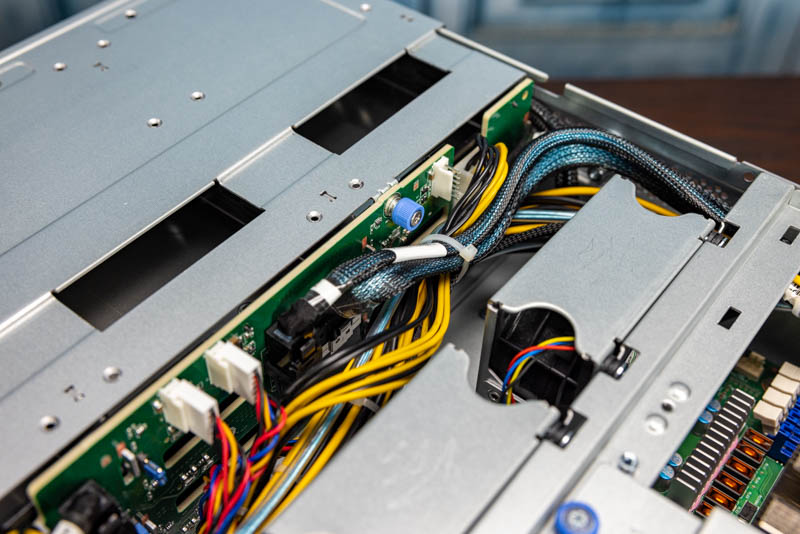
A key benefit of Tyan’s design is that they are using the flexible AMD EPYC I/O to provide these SATA ports. Effectively one does not need to have a SATA controller. For many modern storage applications, RAID cards are not used with redundancy handled through software. This connection method means we do not need to utilize a PCIe slot for storage connectivity.
Behind that backplane is the fan partition. Here we have a few notable points. First, Tyan is only using three fans here. Generally, in systems of this size, we see four or more fans so this was a bit different. The other point that was different is that these fan carriers were made of metal. Generally, we see plastic fan carriers so these had a decidedly more robust feel to them. They still had hot-swap connections but they required a bit more alignment to ensure the rubber contact points for anti-vibration were aligned properly when installing.
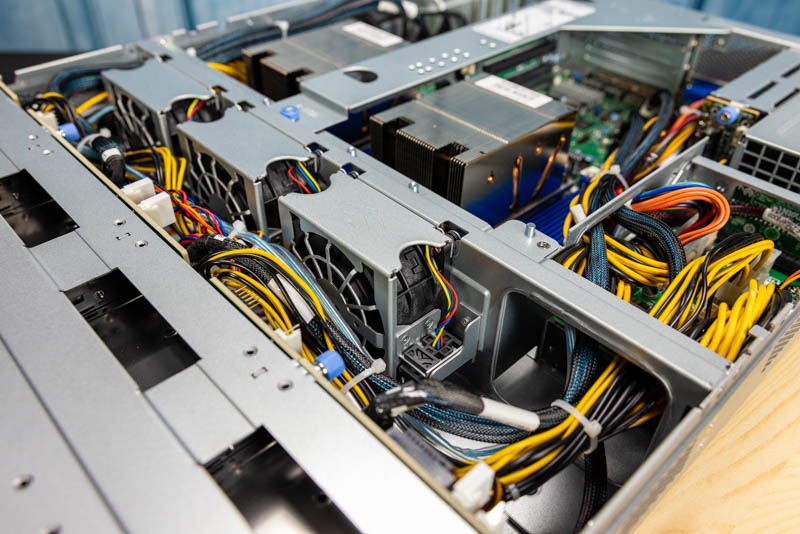
Those three cool the CPUs, memory, and expansion slots. A PCIe riser that we will discuss shortly sits in the middle which helps direct airflow.
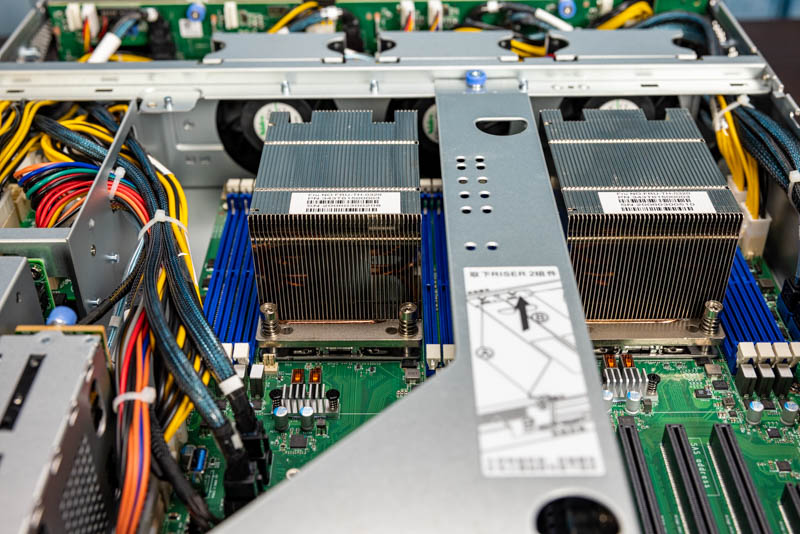
Powering the system we have two AMD SP3 sockets for 2nd Generation AMD EPYC 7002 “Rome” CPUs. We expect these will be upgraded to the EPYC 7003 “Milan” generation as those chips are released in early 2021. These CPUs can range from 8-64 cores and provide all of the memory controllers, PCIe Gen4, and SATA connectivity for the system.
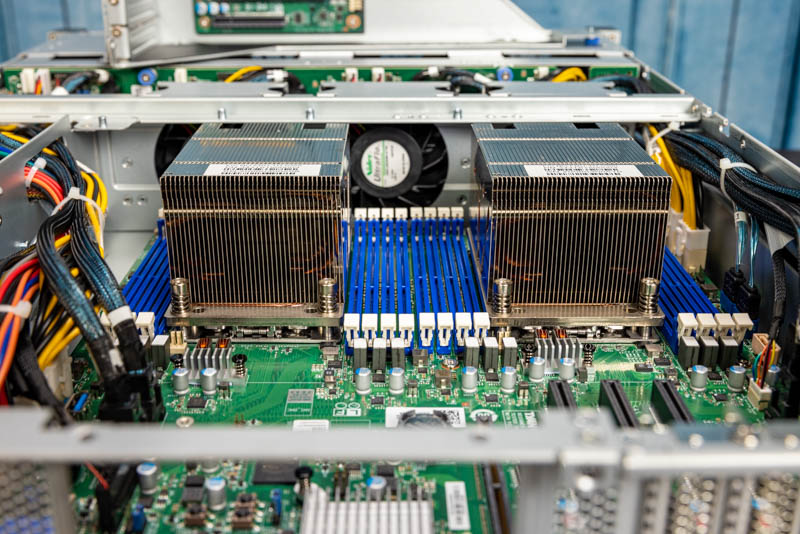
Each CPU has eight DIMM slots. The AMD EPYC CPUs are 8-channel DDR4-3200 memory CPUs so we get 1 DIMM per channel. With 16 DIMM slots in the system, we can get up to 4TB of memory using 256GB LRDIMMs. These EPYC CPUs can run two DIMMs per channel or in 2DPC mode but the TS65-B8253 is physically designed for 1DPC operation.
Something that we did want to point out is that the three-fan setup is not perfectly aligned to cool 1.5 fan modules per CPU. The Nidec UltraFlo fans are very reliable, as are most server fans these days, but this is not the most redundant cooling setup we have encountered. Again, this is a cost-optimized storage platform, but it is something we wanted to show.
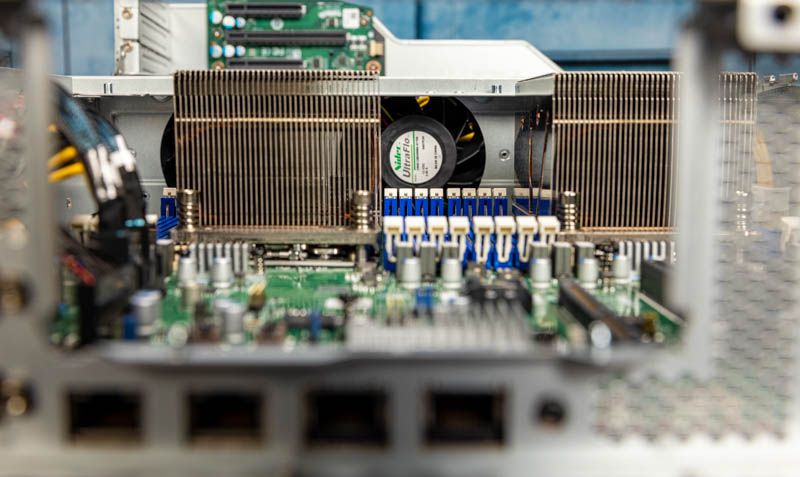
Here we can see the four low-profile PCIe Gen4 slots. There are three PCIe Gen4 x16 slots and one x8 slot on the motherboard.
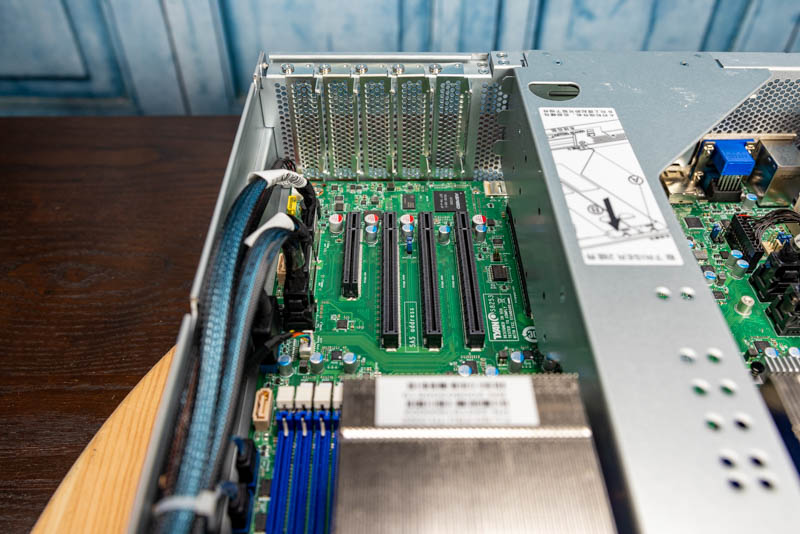
Here is another view of those slots without the riser installed. One can see that the riser plugs into a custom PCIe Gen4 x32 connector on the motherboard specifically designed for this type of application.
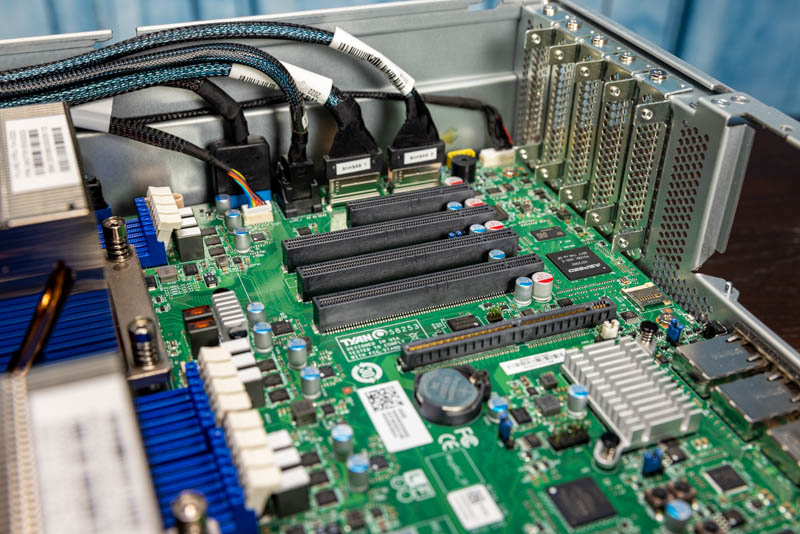
The riser takes these 32x PCIe Gen4 lanes and splits them into one x16 slot and two x8 slots. By placing the x16 slot in the middle, one can add a GPU, DPU, our other double-width full-height card in this riser slot.
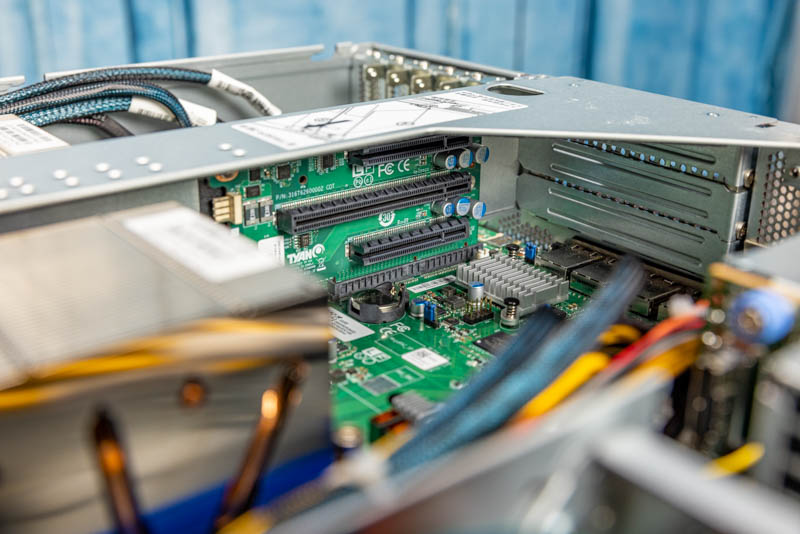
The two riser x8 slots along with the main motherboard’s x8 slot all have open ends which allow for x16 cards to be installed yet run with x8 electrical connectivity. This is a small yet nice touch.
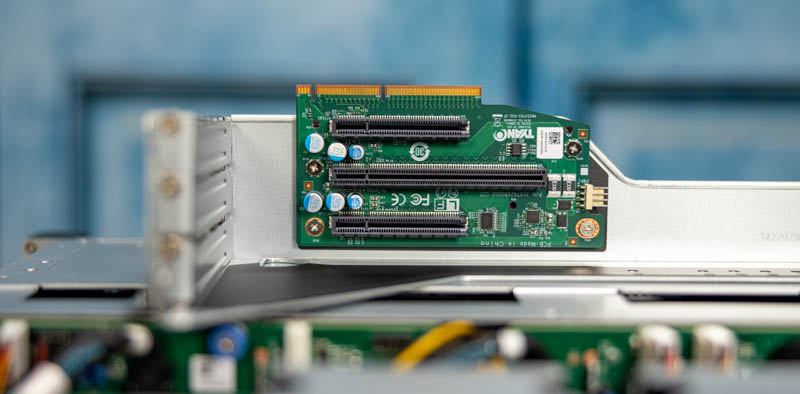
With four x16 and three x8 slots, as well as the SATA/ NVMe connectivity, this system is using a lot of the I/O we see on the AMD EPYC platforms.
Keen readers may have seen off-white 7-pin SATA headers. In addition to the twelve front panel and two rear SATA ports, there are two ports on the motherboard for SATADOMs. Using these SATADOMs allows for the drive bays to be used for higher-end storage other than for boot devices.
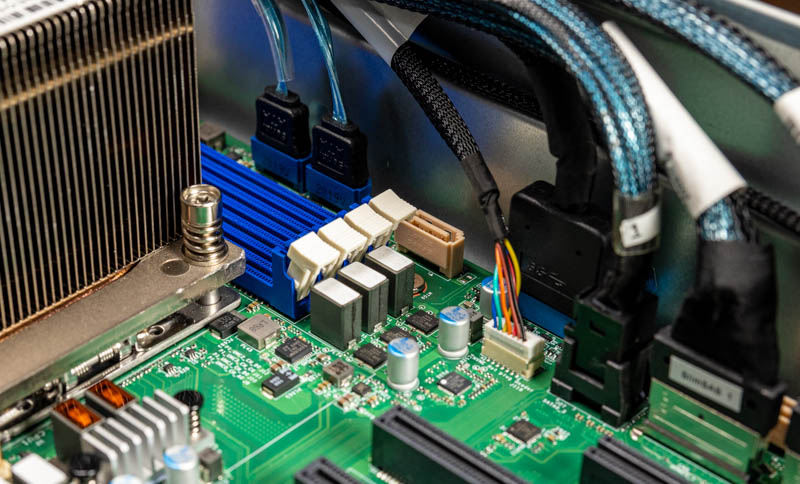
A few other motherboard features we wanted to point out were that there is a microSD card slot on the motherboard near the PCIe x32 riser connector. We also have the Intel X550 10Gbase-T NIC under a small heatsink.
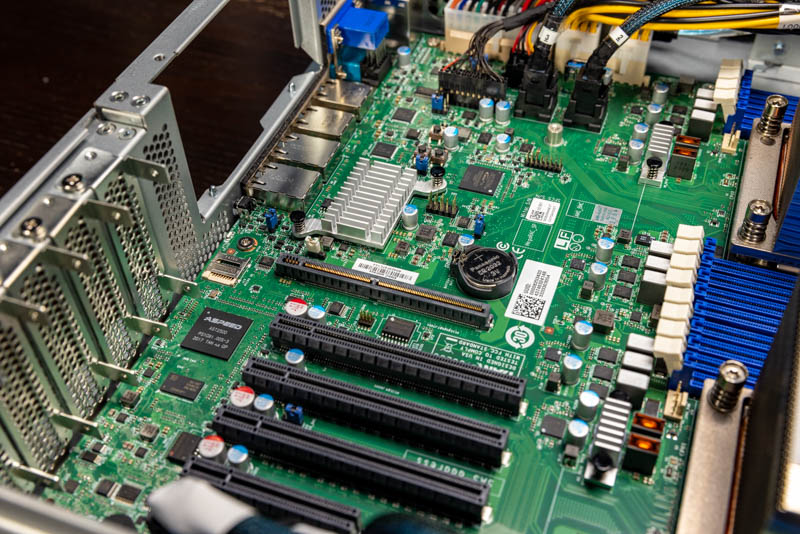
Something that is missing is M.2 drive support. M.2 SSDs are very popular. Tyan’s design methodology seems to be that if you want M.2 drive support, you can use a PCIe card with M.2 drive slots. Given we have SATADOM and rear 2.5″ hot-swap storage, we can understand why a M.2 drive slot was omitted.
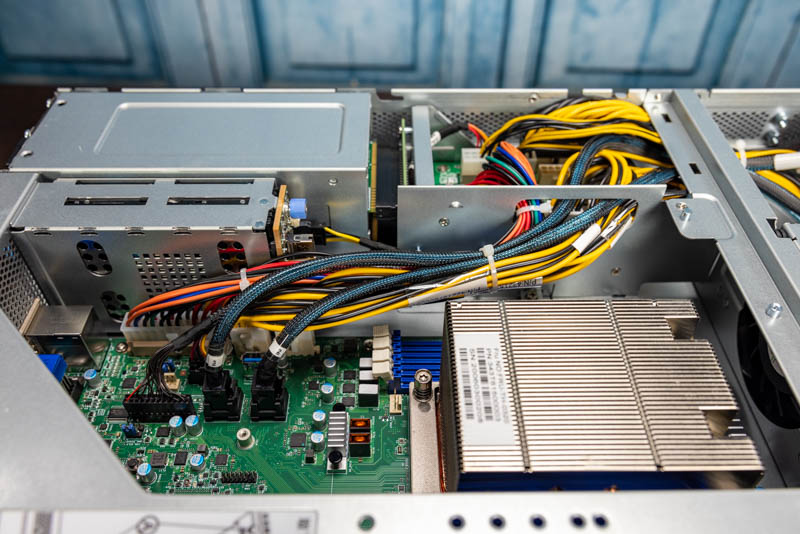
One will likely notice a lot of wires in this chassis compared to some of Tyan’s other systems. Tyan is using a motherboard that has standard EATX mounting (albeit it is slightly larger than standard EATX) instead of a proprietary design. As such, instead of the redundant power supplies plugging into the motherboard directly, they go through a power distribution board and then wires take power to the motherboard, drive bays, and other areas of the system. This is a common design approach when using standard motherboards in servers.
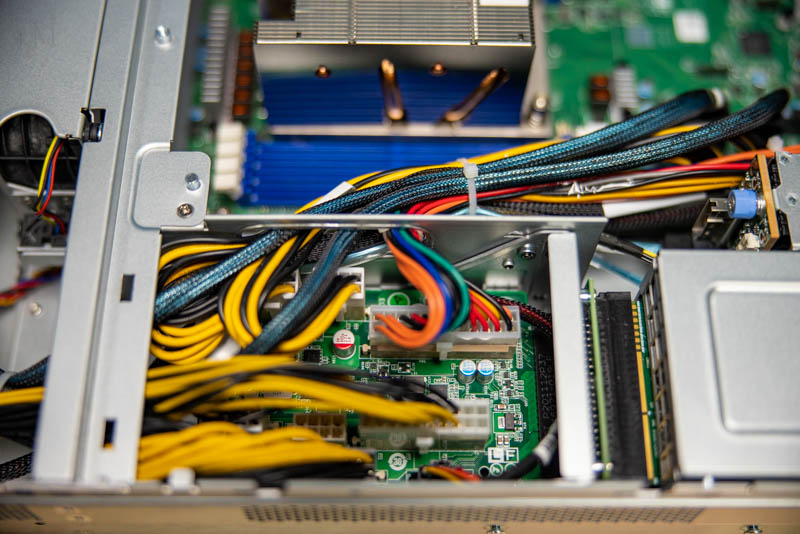
Overall, Tyan did a nice job of balancing cost optimizations with building a robust and expandable hardware platform.
Next, we are going to look at our test configuration and management before getting to performance.




As usual a great review
To be honest this server checks all the boxes in terms of
Dual AMD 7002/3 support “high performance vs relatively low cost compared to Intel” & High RAM Support. Tons PCIe Gen 4 ready to be used on 3×8 & 4×16 expansion card. Great front LFF design with 4xNVMe & 2 SFF at the back & the best of them all
3x Full height expansion card
the question is how load these fans are during high load with a 64bit 240 Watt CPU & a full height GPU?
It is good to be on board
No mention of the FPGA that appears on the block diagram?